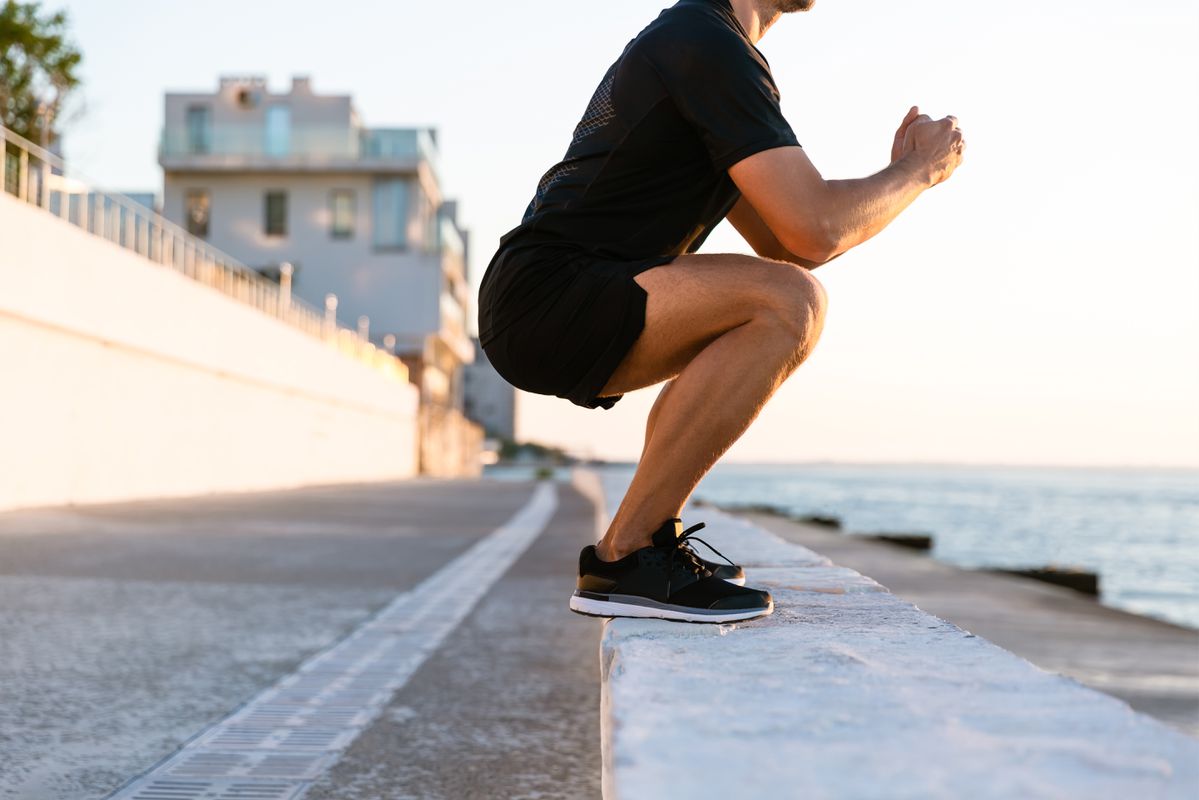Do I have a pelvic floor?
If you have a pelvis, then yes, almost certainly! The pelvic floor refers to a group of muscles that "stretch like a muscular trampoline from the tailbone to the pubic bone," as the Continence Foundation of Australia so delightfully puts it. These muscles hold up the bladder and the bowel, as well as the uterus (if you have one).
What does my pelvic floor do?
In addition to literally supporting all those organs lingering around your pelvis—which require a nice springy base, given their propensity to fill up with poop, pee, and sometimes even fetuses—the pelvic floor surrounds the fleshy tubes that allow such fluids and bodies to exit. The urethra and anus have additional rings of muscle called sphincters that give us more nuanced control of the comings and goings of our waste emissions, but anything trying to get out of your body must get past the pelvic floor first.
Do I need to work out my pelvic floor muscles?
There isn’t a ton of research as of yet on preventative pelvic exercises, but it can’t hurt (as long as you’re doing it right—more on that in a second). And there are certain conditions that may improve with the help of such exercises. A weak or damaged pelvic floor could lead to sexual dysfunction, incontinence, pain during sex, organ prolapse, or even lower back pain. In many of these cases a physical therapist will work to improve pelvic floor strength. But that doesn’t mean you should wait for a uterine prolapse before you start thinking about your pelvic floor.
“The pelvic floor absorbs all the pressure and weight of our bodies, and we pretty much do nothing in our day to day lives to strengthen it,” says Dr. Donna Mazloomdoost, a medical officer at the National Institute of Child Health and Human Development who specializes in pelvic floor disorders. “It’s not like legs, where you’re walking around.” And especially as more people become obese, and put more weight on these muscles, she explains, a quick pelvic floor workout is probably well worth the effort for most of us.
Of course, the people who need to worry most about pelvic floor exercises are folks who have already suffered from related symptoms. Many individuals have strained or damaged muscles after giving birth, while others may have muscles damaged or even partially removed during prostate surgery.
How do I strengthen my pelvic floor?
The answer to this depends on two things: your anatomy and the kind of trouble it seems to be giving you.
“If women want to do them on their own we recommend that each muscle contraction feels like you’re trying to stop the flow of urine, and you want to try to hold that contraction for 6 to 8 seconds, doing sets of 10, three times a day,” says Mazloomdoost. If those are the genitals you’re working with, here’s a helpful video from the Continence Foundation of Australia:
In one study, Stafford and his colleagues found that male patients saw the best outcomes when they were instructed to try to “shorten the penis” with each contraction, as opposed to trying to “squeeze” anything. If you’re not sure you’re making the right kind of movement, you should talk to a doctor or physical therapist. But once you’ve got it down, the instructions are the same: hold that contraction for at least six seconds, in sets of ten, three times a day.
I only leak urine when I lift really heavy weights. Is that okay?
As Dr. Tamra Wroblesky recently wrote to USA Weightlifting members, leaving a puddle of pee on the gym floor is not the sign of a workout well done. It probably means that weight you should be putting on your core muscles is being shifted onto your pelvic floor, which already has enough going on.
“Leaking during lifting is often a sign that there’s a problem, whether it’s improper lifting mechanics, muscle imbalances, or any number of urological dysfunctions,” she wrote. “Listen to your body and get help if you experience any urinary or fecal incontinence. Not only will you fix a problem, but you will also improve your performance. If your body is operating effectively, you will lift more weight.”
